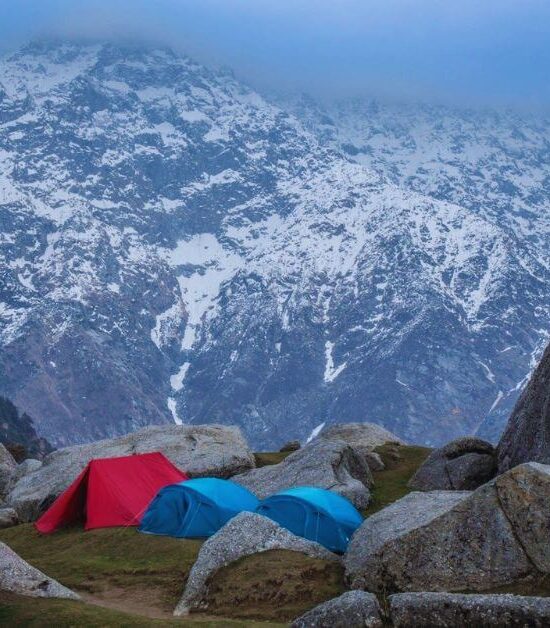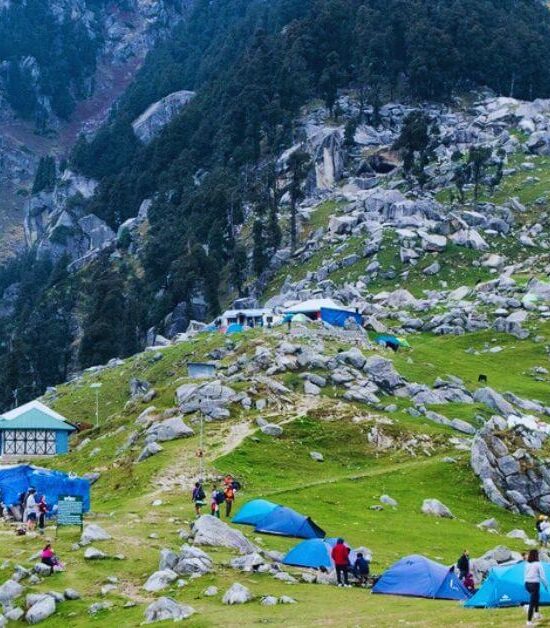Have Any Questions?
+91-83529-58000
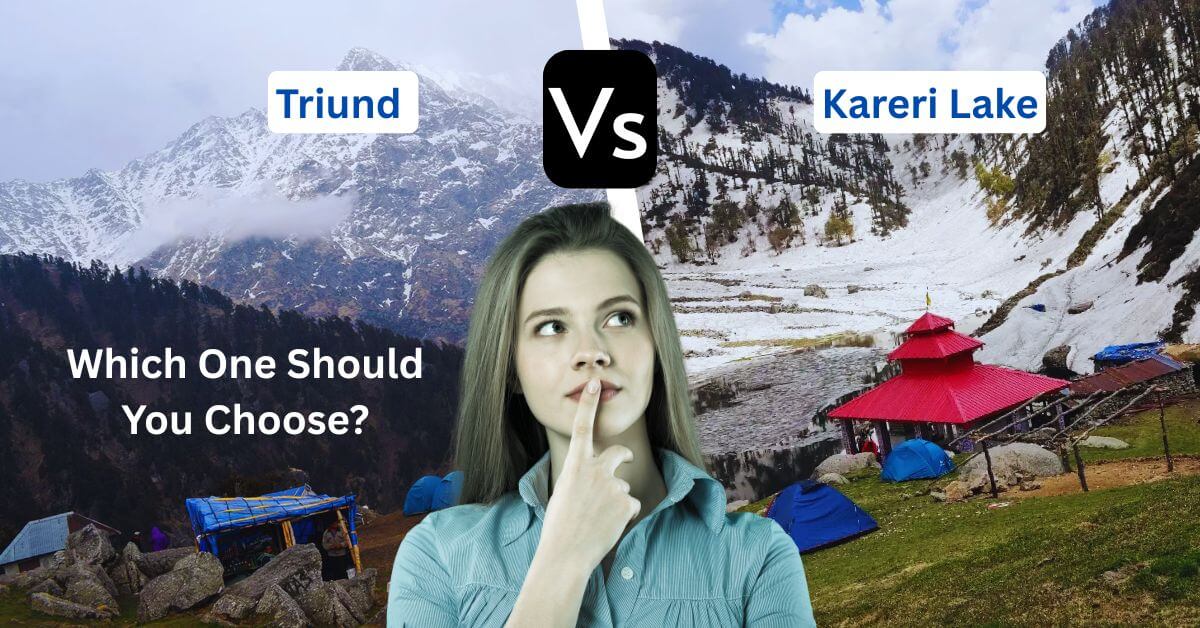
Triund vs. Kareri Lake Trek: Which One Should You Choose?
Tucked away in the serene Dhauladhar range of Himachal Pradesh are two of the most enchanting yet contrasting trekking experiences — Triund and Kareri Lake. Both treks originate from Dharamshala and McLeod Ganj and offer breathtaking views, crisp mountain air, and a healthy dose of adventure. But when it comes to choosing between the two, the decision depends on what kind of trekker you are and what you’re looking for.
In this detailed guide, we compare Triund vs. Kareri Lake Trek across various aspects — difficulty, scenic beauty, crowd, camping, and overall experience — to help you decide which one suits your mountain calling best.
Overview: The Basics of Each Trek
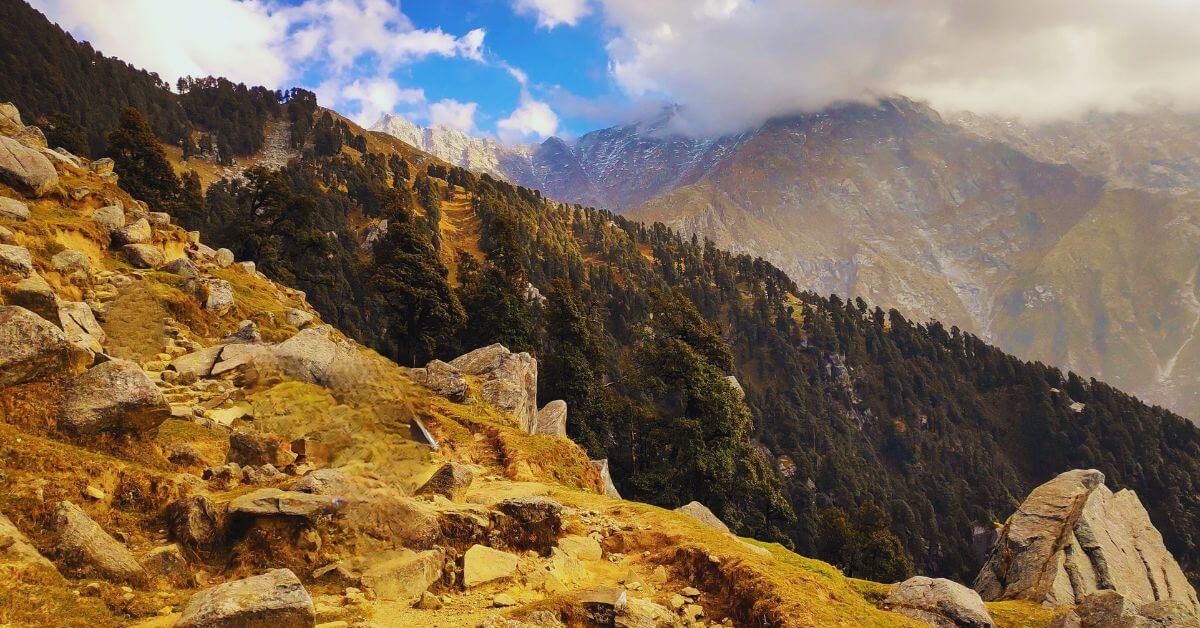
Triund Trek
- Starting Point: McLeod Ganj or Dharamkot
- Trek Distance: 9 km one way
- Altitude: ~2,850 meters
- Time Required: 4–6 hours (one way)
- Difficulty Level: Easy to Moderate
- Ideal For: Beginners, weekend trekkers, solo travelers, families
Kareri Lake Trek

- Starting Point: Kareri Village (about 2-hour drive from Dharamshala)
- Trek Distance: ~13 km one way
- Altitude: ~2,934 meters
- Time Required: 6–8 hours (one way)
- Difficulty Level: Moderate
- Ideal For: Intermediate trekkers, nature lovers, offbeat travelers
Recent Blog Posts
Triund Trek for Beginners: Your Complete Guide to the Easiest Himalayan Hike in Dharamshala
The Ultimate Guide to Planning the Perfect Triund Trek: When to Go for the Best Experience
1. Trekking Difficulty: A Matter of Fitness and Experience
When comparing Triund vs. Kareri Lake Trek in terms of difficulty, Triund is the more forgiving trail.
Triund Trek is well-marked, with a gradual incline and stone-paved paths for most parts. Even novice trekkers or children above 10 can complete this trek with a moderate fitness level. It makes for a perfect weekend escape.
Kareri Lake Trek, on the other hand, is more challenging. The trail includes boulder sections, river crossings, forest trails, and steep ascents in certain stretches. It requires more stamina and a bit of experience. The trail is less developed, which adds to the thrill but demands preparedness.
Verdict:
- Go for Triund if you’re a first-time trekker or want a short and sweet mountain experience.
- Choose Kareri Lake if you’re up for a slightly rugged, full-day adventure.
2. Scenic Beauty: Forests vs. Alpine Magic
Both treks are visually stunning but offer very different landscapes.
Triund greets you with thick rhododendron forests, moss-covered stones, and sweeping views of the Kangra Valley as you ascend. The final meadow at Triund is like a high-altitude balcony facing the snow-capped Dhauladhars. Sunsets and sunrises here are postcard-worthy.
Kareri Lake, however, is a hidden alpine gem. The trail winds through oak and pine forests, picturesque wooden bridges, and finally opens up to a glacial lake fed by melting snow. Surrounded by towering peaks, the lake has a mystical aura — especially during early summer when the ice has just begun to melt.
Verdict:
- Triund wins on panoramic valley views and forest charm.
- Kareri Lake offers a more raw, untouched alpine experience.
3. Crowds and Serenity: Solitude vs. Social Vibes
This is where the real contrast between Triund and Kareri Lake becomes evident.
Triund is arguably one of the most popular treks in Himachal. On weekends and during peak season, the trail can get crowded with backpackers, college groups, and tourists. If you’re a social butterfly or traveling solo and want to meet fellow trekkers, this can be enjoyable.
Kareri Lake Trek is still under the radar for many. Fewer people mean quieter trails, a closer connection with nature, and a more meditative experience. You might go hours without seeing another soul.
Verdict:
- Pick Triund for a lively, energetic trail experience.
- Opt for Kareri Lake if peace and solitude are your priorities.
4. Camping and Stay Options
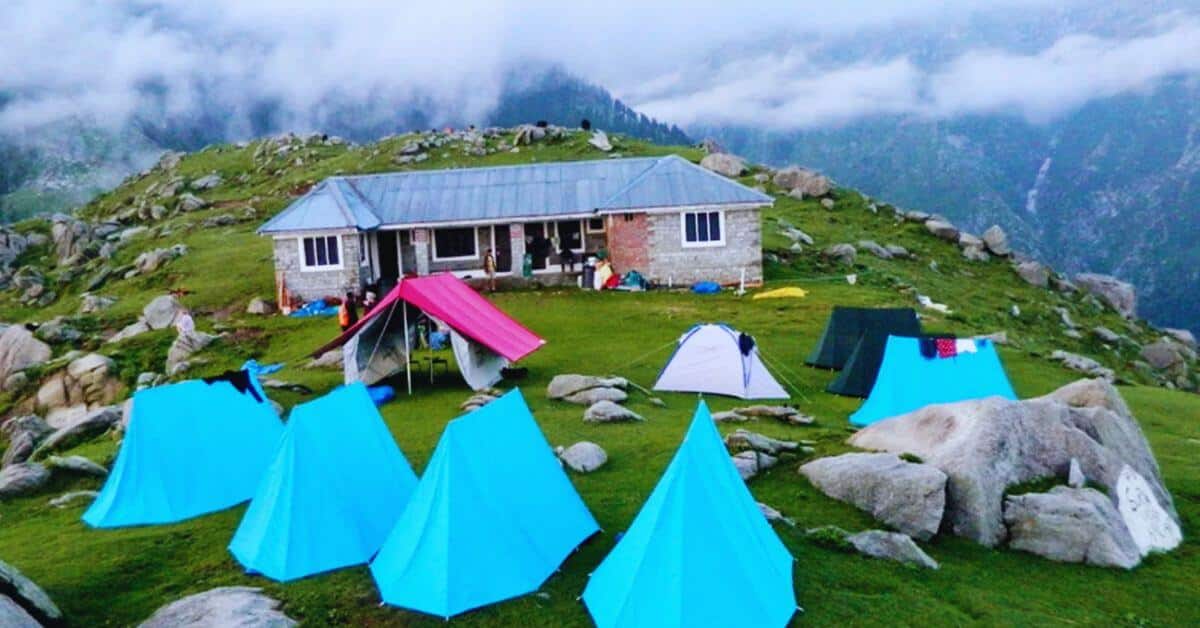
Both treks offer camping opportunities, but with varying degrees of comfort and access.
At Triund, several organized campsites operate seasonally. Tents are available on rent, with sleeping bags, mats, and meals provided. There are also small tea stalls and basic washroom facilities — making it ideal for beginners.
Kareri Lake has fewer facilities. You’ll either need to carry your own camping gear or book through local guides who arrange everything from porters to food. Camping by the lake under the stars is a deeply rewarding experience but also more rustic.
Verdict:
- Choose Triund for comfort and convenience.
- Go for Kareri Lake if you’re okay with going a little rugged for a more immersive experience.
5. Best Time to Visit
Triund Trek is accessible most of the year except during heavy snowfall (usually January–February). Spring (March–June) and autumn (September–November) are ideal for pleasant weather and clear skies.
Kareri Lake Trek is best undertaken between April and June or September to early November. The lake remains frozen in early spring and becomes fully accessible only after the snow starts melting. Monsoon months (July–August) are best avoided due to slippery trails.
Verdict:
- Triund offers a longer trekking window.
- Kareri Lake is more seasonal but worth the timing.
6. Weather Report: May 2025
Triund Trek Weather in May 2025
May offers near-perfect trekking conditions for Triund. Daytime temperatures range between 15°C and 25°C, with clear skies providing magnificent panoramas across the Dhauladhar range. Night temperatures can drop to between 7°C and 12°C, so warm clothing is advisable.
Kareri Lake Trek Weather in May 2025
Kareri Lake experiences pleasant weather in May, with daytime temperatures around 15°C to 20°C and nighttime temperatures potentially dropping to 8°C. The skies are usually clear, offering breathtaking views of the surrounding mountains and valleys. However, be prepared for sudden weather changes, including unexpected rain or snow flurries.
7. Wildlife, Culture, and Flora
While Triund feels more commercial, it still offers glimpses of local flora and the occasional mountain goat or bird of prey.
Kareri Lake passes through quaint Himachali villages, giving you a peek into traditional life. You might also spot Himalayan monals, eagles, and goral deer on the quieter stretches. The lake itself holds religious significance for locals.
Verdict:
- Choose Kareri Lake if you enjoy cultural elements and untouched natural beauty.
- Pick Triund if you prefer a more classic hill station vibe.
8. Budget and Accessibility
Triund Trek is more economical. Since it starts right from McLeod Ganj, you don’t need extra transport. Camps are budget-friendly and easy to book on arrival.
Kareri Lake Trek usually requires a guide, jeep transfer to Kareri village, and possibly porters if you’re carrying gear. This makes it slightly more expensive.
Verdict:
- Triund is ideal for low-budget trips and spontaneous plans.
- Kareri Lake suits planned, mid-budget adventures.
9. Photography Potential
Both treks are photogenic, but in different ways.
Triund offers dramatic sunsets, wide valley views, and glowing Dhauladhar peaks at dusk.
Kareri Lake is a dream for landscape and nature photographers — the glassy lake reflecting snow-laden peaks is a rare sight, especially at sunrise.
Verdict:
- Triund is Instagram-ready and vibrant.
- Kareri Lake is ethereal and cinematic.
10. How to Reach from D'Polo Club & Spa Resort
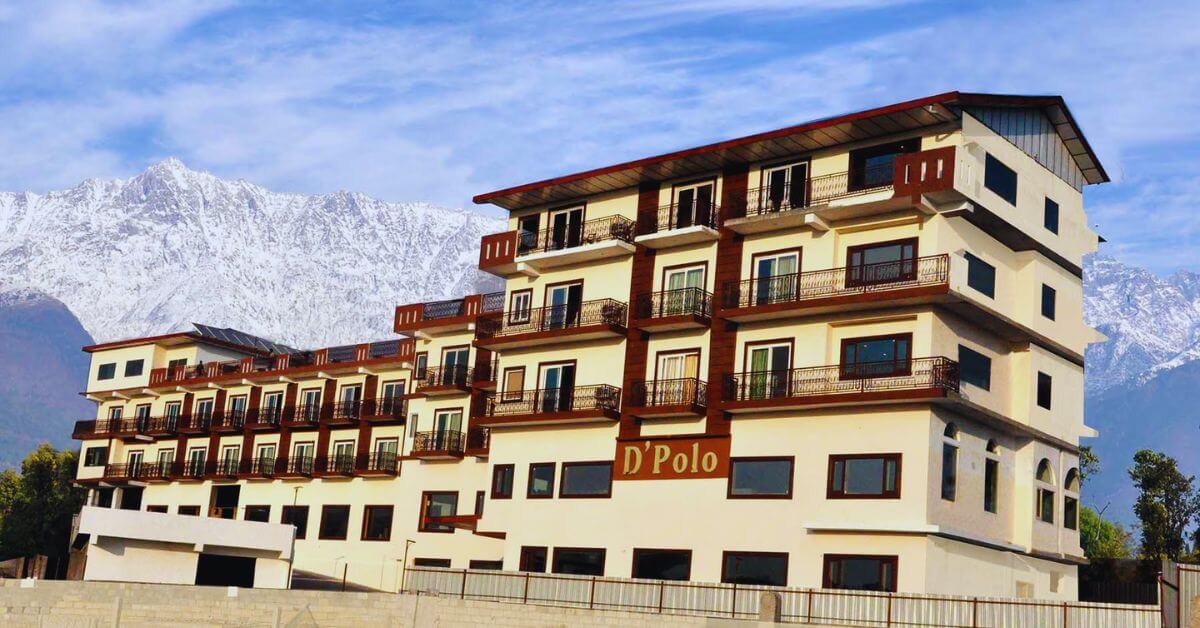
Reaching Triund from D’Polo Club & Spa Resort
- Drive to McLeod Ganj or Dharamkot: D’Polo Club & Spa Resort is located in Bhatehr, Dharamshala. From the resort, it’s approximately a 10 km drive to McLeod Ganj or Dharamkot, the common starting points for the Triund trek.
- Start the Trek: From McLeod Ganj or Dharamkot, begin your 9 km trek to Triund. The trail is well-marked and popular among trekkers.
Reaching Kareri Lake from D’Polo Club & Spa Resort
- Drive to Kareri Village: From D’Polo Club & Spa Resort, drive approximately 27 km to Kareri Village, the base for the Kareri Lake trek. The journey takes about 1.5 to 2 hours by car.
- Start the Trek: From Kareri Village, embark on the 13 km trek to Kareri Lake. The trail passes through lush forests and offers scenic views. It’s advisable to hire a local guide for this trek.
Final Thoughts: Triund vs. Kareri Lake Trek — Which One Should You Choose?
Choose Triund If You Want:
- A short and relatively easy trek
- A social, energetic trail experience
- Comfort with minimal planning
- Beautiful sunsets and panoramic views
Choose Kareri Lake If You Want:
- A quieter, more immersive nature experience
- A moderate challenge with fewer tourists
- A deeper connection with local culture
- The thrill of reaching a high-altitude glacial lake
Both treks are spectacular in their own right and showcase different facets of the Dhauladhar mountains. Whether you’re dipping your toes into trekking or looking for a deeper escape, Triund vs. Kareri Lake Trek is not a question of better or worse — it’s a question of what your soul seeks.
People Ask Questions - FAQs about Triund vs. Kareri Lake Trek: Which One Should You Choose?
Triund is better suited for beginners. It has a well-marked, shorter trail with moderate ascents and better facilities. Kareri Lake is more challenging, with river crossings and rugged terrain that require higher stamina and guidance.
Yes, camping is allowed on both. Triund has well-managed campsites with rental tents and food facilities, while Kareri Lake offers more raw, offbeat camping. You may need to pre-arrange gear and food for Kareri.
- Triund Trek: ₹800–₹1,500 (basic camping & food included).
- Kareri Lake Trek: ₹2,500–₹4,000 (includes transport to Kareri village, guide, camping, and meals).
- It depends on your preference. Triund offers panoramic views of the Kangra Valley and Dhauladhar range. Kareri Lake features a stunning high-altitude glacial lake and more solitude in nature.
- Triund: Yes, it’s beginner-friendly and safe to do solo.
- Kareri Lake: A guide is recommended due to fewer markings, longer trail, and water crossings.
Triund is more family-friendly. Children over 10 and older adults in good health can complete it. Kareri Lake is better suited for fit adults due to its tougher terrain.
- Triund: March–June and September–November.
- Kareri Lake: April–June and September–early November. Both are best avoided during heavy monsoons.
- Triund (via McLeod Ganj): ~10 km drive (30–40 min).
- Kareri Village (Kareri Lake base): ~27 km drive (1.5–2 hours).
- Triund: Limited coverage (mostly BSNL and Jio); patchy beyond Gallu Devi Temple.
Kareri Lake: Very limited or no network after Kareri village — expect a digital detox.
Yes, if you’re in Dharamshala for 4–5 days, you can do Triund on one day and Kareri Lake the next with a rest day in between. Start early and stay hydrated.


